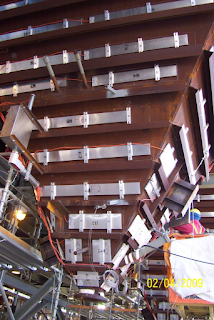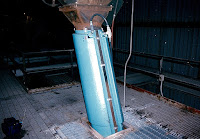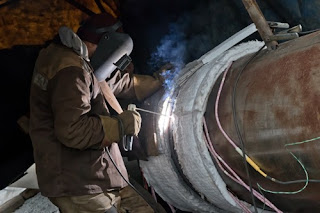Welder’s must pay strict attention when it comes to preheating, interpass temperature control and stress relieving. Torches takes too long and make it difficult to maintain heating uniformity. Plus there’s the issue with open flames and the expense of fuel.
Ovens are great for uniformity and control, but require transport and time. They're certainly not convenient.
A great alternative, one that provides excellent uniformity, control, and convenience, is induction heating.
Induction heating is unique because it uses molecular excitation as its source of heat, as opposed to open flames or external electric elements.
Induction heating works very quickly, and since there is no contact with the target piece, there are far less concerns about part contamination. Many industrial processes use induction heating when very high temperatures and uniform control is desired.
Its important to note that the heat is created from inside the object itself, with no open flame or external electric heat source.
Induction heating is used to heat conductive materials. Developed in the early 20th century, it quickly became a popular choice for hardening military equipment parts during wartime. Because of induction heating’s controllability, speed and consistent output, its popularity continued to grow as new manufacturing and production methodologies were developed. Today, induction heating has become a popular technology for the welding industry to provide pre and post-weld stress relief.
Induction heaters provide temperatures and cycle times hard to achieve otherwise. By virtue of their high temperature capabilities, very fast heat up times, precise application of heat, excellent controllability, and ease of setup / breakdown, the use of induction heating has been know to cut 30% to 50% of total weld cycle time in real-life welding applications.
Induction heaters consist of a few primary components: An electromagnet and an electronic oscillator that passes a high-frequency alternating current (AC) through the electromagnet. RF (radio frequency) energy is transferred into the workpiece via electromagnetic waves. These alternating magnetic waves penetrate the object, creating electric eddy currents. These eddy currents (Foucault currents) flow through the target piece and produce heat.
Pre and post-weld heat treating (stress relieving) is a growing market for induction heating systems because it offers significant benefits such as excellent heat placement and distribution, lower cycle times, safety, ease of use, and efficiency.
For more information about induction heaters for pre and post-weld heat treating visit
HotfoilEHS at
http://www.hotfoilehs.com or call 609.588.0900.












